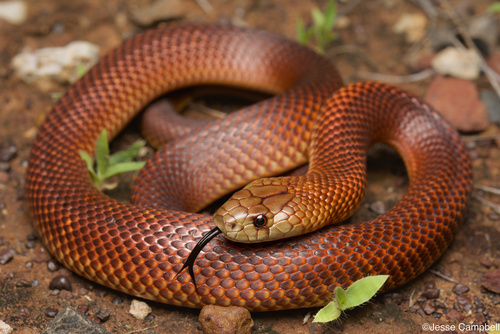
King Brown Snake
Meet the King Brown Snake, Pseudechis australis, a formidable predator of the Australian outback. With its impressive size and potent venom, this snake commands respect. Its varied habitat and diet underscore its adaptability, while its role in controlling pests highlights its ecological importance.
Length: 1.524 - 3.048 m
Size
Brown
Color
High
Aggression
Least Concern
Conservation Status
Decreasing
Population Trend
Characteristics
Pseudechis australis, commonly known as the King Brown or Mulga Snake, is native to Australia. It inhabits a variety of environments, from woodlands and grasslands to arid deserts. Known for its large size, often exceeding 2.5 meters, it has a distinctive brown coloration. Despite its name, it is a type of black snake. It preys on mammals, birds, and reptiles, and plays a crucial role in controlling pest populations. The King Brown Snake is notable for its potent venom and is known for its defensive behavior, raising its head and hissing when threatened.
Distribution Range of the King Brown Snake
Pseudechis australis, commonly known as the King Brown Snake or Mulga Snake, is native to Australia. It is found across a wide range of environments throughout the continent, particularly in arid and semi-arid regions. The species is distributed across all mainland states and territories, except for the southern coastlines and the far southwest of Western Australia.
King Brown Snake's Habitat
Environmental Conditions
The King Brown Snake inhabits a variety of environments including open woodlands, shrublands, grasslands, and desert regions. It is well-adapted to arid and semi-arid conditions, often found in areas with sandy or rocky substrates. The climate in these regions typically features hot summers and mild winters, with low to moderate rainfall.
Ecological Niche
Pseudechis australis is a terrestrial and primarily diurnal snake, although it may become nocturnal during hot weather. It occupies an ecological niche as a top predator, feeding on a wide range of prey including small mammals, birds, lizards, and other snakes. The species is known for its ability to adapt to various environmental conditions, which contributes to its wide distribution across Australia.
Copyright @ Nature Style Limited. All Rights Reserved.
 English
English